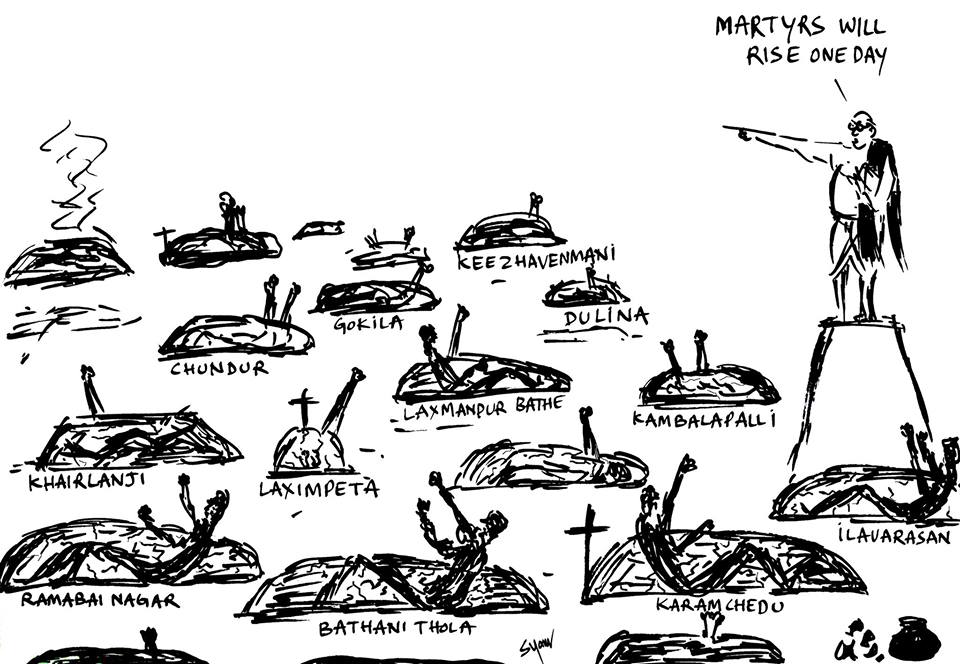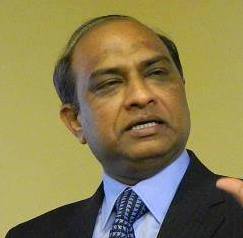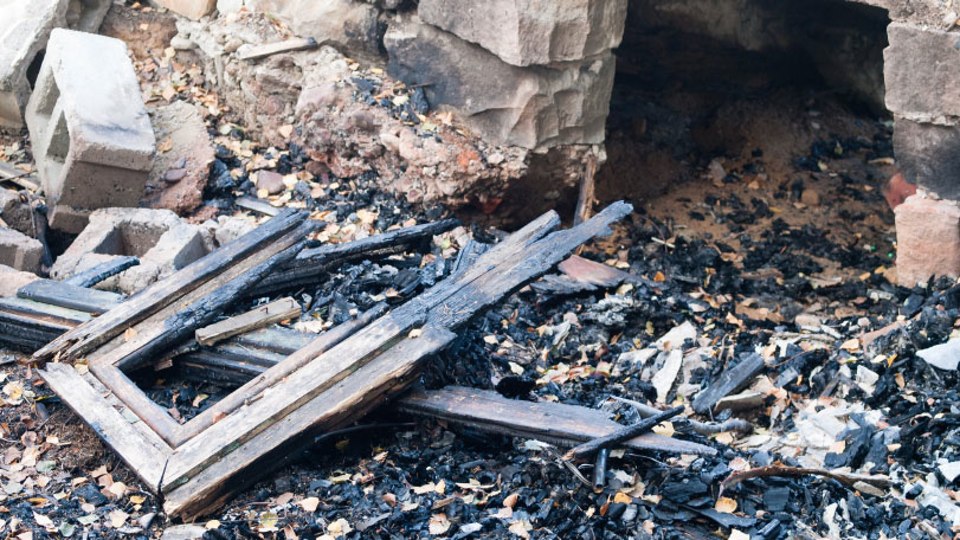Tejaswini Tabhane
 Famous Indian Sociologist, André Béteille, writes a thick book on Indian Higher Education — Universities at the Crossroads. Therein, he does not mention much about caste. The only point where he brings out the issue of caste is when he discusses the poor performance of state universities and one reason he gives for it is caste based reservations. This is how Indian Academicians have erased the existence of caste in Higher Education. Or worse, they have reduced it to merely reservations.
Famous Indian Sociologist, André Béteille, writes a thick book on Indian Higher Education — Universities at the Crossroads. Therein, he does not mention much about caste. The only point where he brings out the issue of caste is when he discusses the poor performance of state universities and one reason he gives for it is caste based reservations. This is how Indian Academicians have erased the existence of caste in Higher Education. Or worse, they have reduced it to merely reservations.
In recent years, there have been talks about caste based institutional discrimination and violence in Indian Campuses. However, again, the Indian Academicians have reduced caste to the experiences of discrimination of Dalit Bahujan students as if the others are oblivious to caste. It is very convenient for them because this prevents the hegemonization of power and position in the Indian educational institutions from being questioned and challenged. This paper precisely addresses this question and discusses how the power in academia is maintained in the hands of a particular caste through the complete hegemonization of knowledge production process and pedagogy and what are its consequences.
Caste, as some scholars have understood it, is both the base and superstructure of Indian society; both relations of production and power are mediated through it. Each and every institution in this country is formed on the base of caste, even the academia. And they reproduce and maintain the caste hierarchies within them. The distribution of power and resources in Academia is in accordance with the caste hierarchies. According to All India Survey of Higher Education1, 58.2% of all teaching positions across Universities and colleges in India are occupied by non SC, ST, OBC, Religious Minorities and PwD. So who have occupied this 58.2% of positions? The Brahmins and the allied castes. Out of the total 496 vice-chancellors in India, just 46 among them are from SC, ST, OBC background2. This constitutes less than even 10%.
These numbers are helpful but do not tell us the entire picture. Because there is no sub-categorization within the category of Upper Caste. But we can safely guess that majority among the Upper Caste in Academia are Brahmins. So the ones who define what is knowledge, produce the knowledge and also decide what knowledge is to be produced are essentially Brahmins. The knowledge produced in Academia is Brahmanical at its core and the complete hegemonization of Brahmins over the Academia has led to the normalization and Universalization of this Brahmanical knowledge. Maximum number of students and professors involved in research work come from Brahmin-Savarna background and hence their understanding of any matter obviously comes from their Brahmanical worldview. So the knowledge they produce carries the Brahmanical consciousness. What is being taught in the classrooms from the primary level holds the Brahmanical values. For instance, Political theorist, Kancha Ilaiah, has mentioned in his book Why I Am Not A Hindu that he got to know about Brahmanical Gods such as Brahma, Vishnu or Eswara only after he entered the school. The Brahmin, Upper Castes intellectuals, political thinkers, historians, leaders are introduced in the books as ‘Indian’ intellectuals, ‘Indian’ political thinkers, ‘Indian’ leaders and so on. While Babasaheb Ambedkar would be referred as ‘Dalit’ leader; Periyar, an OBC leader; Namdeo Dhasal, a Dalit Poet and so on.
The control over knowledge production by the Brahmins has led to complete invisibilization of the marginalized castes from the textbooks. Their work, contribution, and revolutionary acts find no space in the Brahmanical scriptures camouflaged as academic textbooks. There is a preponderance of evidence to support this claim. One would hardly find a mention of Dalit poet and Saint Chokhamela3 while studying the Bhakti Movement of Maharashtra. Mahatma Jotiba Phule and Savitrimaai have very recently got a space in our textbooks but there is the history of erasing their lives and work by the Brahmin Scholars of Pune. No one had an idea of their contribution to the women’s and anti-caste movement until the late 19th century and the early beginning of 20th century. The revolutionary initiative by Savitrimaai of arranging the first priest-less marriage4 is never told in the classrooms. And we still have very little information about the contribution of Fatima Shaikh who worked with Savitrimaai for women’s education.
Let us move towards the History writing of India. The Caste question and its origin were hardly studied in Indian History and the Dalit Bahujan scholars like Babasaheb, Phule, Periyar who put their academic rigour to find the answer to this question were never regarded as “Historians”. Babasaheb in his essay The Untouchables; Who Were They And Why They Became Untouchables? has mentioned about the negligence of the study of the origin of the Caste system by the Brahmin scholars. In this context, questioning the intellectual honesty of the Brahmin scholars, he writes: “Today all scholarship is confined to the Brahmins. But unfortunately no Brahmin scholar has so far come forward to play the part of a Voltaire who had the intellectual honesty to rise against the doctrines of the Catholic Church in which he was brought up; nor is one likely to appear on the scene in the future. It is a grave reflection on the scholarship of the Brahmins that they should not have produced a Voltaire.”
Today, what is regarded as Indian History is essentially the history of Brahmins and the allied upper castes where Rani Lakshmibai finds ample space but Jhalkaribai remains invisible. The history textbooks would glorify the Brahmin Peshwa rule but hardly tell about the treachery they did to capture the power and the fact that under their rule caste system was practiced in its most heinous form. Nowhere in any Indian historical text even in Maharashtra itself, one would find any reference of Bhima-Koregaon battle of 1818 where comparatively very small army of British that majorly comprised of Dalits Bahujans, particularly the Mahars, defeated the mighty Peshwas. Recently, CBSE removed an entire History of Nadar Women’s anti-caste struggle of fighting against breast tax in Kerala from its textbooks5. This leads us to the conclusion that the field of History has played a crucial role in erasing not only the lives and struggle of the marginalized castes but also the crimes of the upper castes.
Impact on students
It is important to discuss how does this hegemonization of knowledge production impact the students? For students coming from Brahmin and upper castes, it helps to create a familiar, homely environment in the universities. The values, the practices and the histories they are taught in their homes and they see around them are reflected in the textbooks. Hence, many a time we see the upper caste students telling us how these universities or colleges or schools are like their home to them as opposed to Dalit Bahujan Adivasi students for whom these places are exclusionary and completely alien. It also helps to create a positive identity and a sense of pride among the upper caste students. A Brahmin student can easily take pride in her Brahmin-ness or a Rajput student in her Rajput-ness because she has an entire Indian history to valorize her caste community.
For students coming from marginalized castes, this puts them in a disadvantaged position. Firstly, they have to learn something as a universal knowledge which in actuality is a knowledge that revolves around a certain castes, community and is completely unknown or alien to them. And secondly, this creates a negative and inferior identity among them if they aren’t already aware of their histories. This creates an identity crisis for them and they began to lose their confidence. They began to feel inferior in front of those students who have an entire history and academia backing their supremacy.
For Dalit Bahujan students who are aware of their histories and have caste consciousness among them, it becomes difficult to survive this hegemonization. To explain this, I would quote Jitendra Suna, a PhD Scholar at JNU who has written about his experience of surviving these academic agraharas. He says6, “After coming to the Centre for Historical Studies, I started hating history. This hatred is an accumulative pressure of Brahmin-Savarna professors who make me hate history. They taught me how Gandhi fought against untouchability. I ask, if Gandhi and Congress fought for democracy, fought against caste, untouchability, why I am a subhuman, an animal in 21st century in my village, in your society and in this very university?” When an Ambedkarite student points out the fault in this academia and its knowledge, she is silenced by reminding her that the “authorized sacred texts” of the Brahmins do not validate her claims. This is a form of institutional violence because it has deep mental and psychological impact on these students and it also affects their academic progress.
To conclude this, we need to mention that this Brahmanical hegemonization and monopoly over Knowledge production is not new to the Hindu Civilization. Their Shastras legitimize this hegemony. It tells them “Varnanam Brahmano Guru” which means the Brahmin is appointed as the Guru (teacher) for the three Varnas. This hegemonization hampers the process of knowledge production from marginalized castes. It makes the process difficult for them as they have to unlearn the Brahmanical narratives taught to them in our classrooms and then re-learn new things so as to be able to produce any knowledge of their own. Knowledge being a source of power and the right to produce it being completely under the grip of a particular caste has managed to oppress the Dalit Bahujans for centuries. It is pity that the classrooms of democratic India reflect these scriptural shibboleths of caste.
Babasaheb in Annihilation of Caste writes, “There is no exaggeration in saying that the entire destiny of a country depends upon its intellectual class”. Unfortunately, in India, the intellectual class which is another name for the Brahmin caste has never worked honestly in the interest of the country. Babasaheb also mentions this in The Untouchables. He writes, “The point is that the intellect of a Brahmin scholar is severely limited by anxiety to preserve his interest. He suffers from this internal limitation as a result of which he does not allow his intellect full play which honesty and integrity demand. For, he fears that it may affect the interests of his class and therefore his own.” Thus, we need to democratize this knowledge production process to make it inclusive of everyone and destroy the unjust domination of one particular caste. This, in my opinion, is in the interest of the Indian society and the Indian nation.
~
Notes
1] All India Survey of Higher Education Final Report 2016-17 http://aishe.nic.in/aishe/viewDocument.action?documentId=239
2] https://www.siasat.com/news/just-6-sc-6-st-total-496-vice-chancellors-rti-reveals-sorry-state-affairs-1300935/
3] https://www.tiki-toki.com/timeline/entry/423929/Dalit-History-Month/
4] https://www.tiki-toki.com/timeline/entry/423929/Dalit-History-Month/
5] https://www.huffingtonpost.in/2016/12/20/section-on-nadar-womens-struggle-expunged-from-cbse-textbook_a_21631453/
6] The Death of a Historian in Centre for Historical Studies, JNU – Jitendra Suna; http://roundtableindia.co.in/index.php?option=com_content&view=article&id=9011:the-death-of-a-historian-in-centre-for-historical-studies-jawaharlal-nehru-university&catid=119&Itemid=132
~~~
Tejaswini Tabhane is a budding Ambedkarite and a first-year student of B.A (H) Economics at Miranda House, Delhi University.










